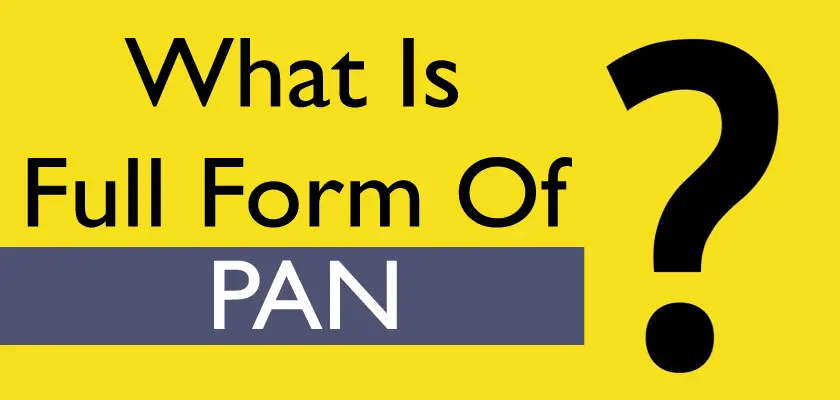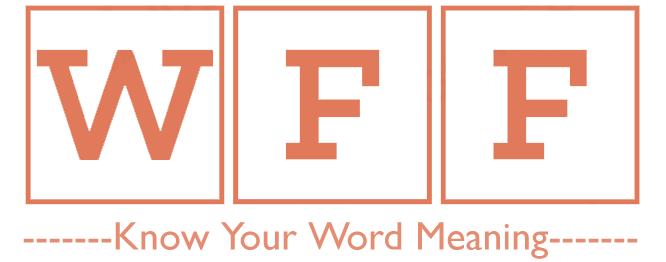PAN Full Form:- Do you know the PAN Card Full Form? The full form of a PAN card is Permanent Account Number. It is a unique ten-digit alphanumeric card issued by the Income Tax Department of India. Under section 139A of the Indian Income Tax Act 1961, this card is issued by the Income Tax Department of India.
Table of Contents
What is the PAN Card Full Form?
PAN Card Full Form: Permanent Account Number
- P- Permanent
- A- Account
- N- Number
What is the PAN?
The Permanent Account Number (PAN), or Personal Identification Number is a ten-digit unique number (that includes both numeric and alphabetic symbols) that is allotted to Indians who pay taxes so that the government can identify the taxpayers across the country.
The PAN system of identification may be a computer-based system that issues a highly distinctive number to each Indian taxpaying organisation. This system, which employs a single PAN number as the main key for data storage, is used to capture all tax-related information for an individual. No two people who work for tax-paying organisations may have the same PAN because this information is shared across the nation.
When someone is allotted a PAN card when along with this, the levy department also issues a PAN Card. This PAN card carries your personal information such as your PAN number, your name, date of birth(DoB), and your image. Copies of this card can also be used to prove your identity or date of birth.
Structure of PAN Card
As you know the PAN card is a unique identity document that consists of 10 alphanumeric digits. It is a compulsory document for all Indians in India under the Income Tax Act of 1961. In India, the two authorities that are allowed to issue PAN card schemes are UTI Infrastructure Technology and Services Limited and NSDL e-Governance Infrastructure Limited. These 10 digits are arranged in a specific format, the structure of the Pan card is as follows:
Structure of PAN card: AAACL1324Y
In this format, the first five characters include letters and the next four digits in numeric, and the last character is again a letter.
- The fourth character of the ten-digit number indicates the status of the PAN number holder.
The following list explains the fourth character status or PAN card type–
P – Individual
C – Company
H – HUF (Hindu Undivided Family)
A – AOP (Association of Persons)
B – BOI (Body of Individuals)
G – Government Agency
J – Artificial Judicial person
L – local authority
F – Firm or Limited Liability Partnership
T – Trust - The fifth character of the PAN’s 10-digit number reflects the first character of the Individual’s surname or last name and the non-individual 5th character, reflects the first letter of the PAN cardholder name.
- The sixth to ninth characters are the numbers 0001 to 9999.
- The last tenth character describes the alphabetic check digit.
How to Apply for the PAN Card?
To apply for a PAN card in India, follow these steps:
- Visit the official website of NSDL or UTIITSL
- Click on “Apply for PAN”
- Select the “Individual” category
- Fill out the application form (Form 49A) with the required personal and financial details
- Necessary documents on the type of PAN Card such as:
- If Individual:
- Voter ID
- Driving license
- Aadhaar card
- Passport
- If HUF (Hindu Undivided Family):
- Affidavit of HUF (inc. member ID and address proof)
- Register certificate
- If Trust:
- Trust deed
- Register certificate from trust & charity commissioner
- If Society:
- Register certificate from cooperative society commissioner
- If Foreigners:
- Bank statement from resident country & India NRE account.
- Passport
- If Individual:
- Upload necessary documents like ID proof and address proof
- Pay the processing fee through a credit/debit card or net banking
- Submit the form and track the application status online.
Benefits of A PAN Card
The following are the benefits of a PAN Card:
- Mandatory for financial transactions: PAN card is mandatory for all high-value financial transactions (above five lakhs).
- Required for: Opening a bank account, buying or selling property and automobiles, or investing in shares.
- Proof of Identity: PAN card serves as a government-approved identity proof for individuals in India.
- Facilitates easy tax compliance: PAN is linked to an individual’s tax records and is required to file taxes, making it easier for the government to track financial transactions.
- Wide Acceptance: PAN card is accepted as a valid form of identification across India and is recognized by government departments, financial institutions and other organizations.
- Avoid fines: Not having a PAN card can attract heavy fines and penalties. Individuals can avoid such fines and penalties by having a PAN card.
- Easy Track Record: A PAN card acts as a single, permanent record of all financial transactions, making it easy to track the financial history of an individual.

Other PAN Full Forms List
The following list below consists of all PAN card full forms:
| Term | Full Form | Category |
| PAN | Permanent Account Number | Indian Government |
| PAN | Personal Area Network | Telecommunication |
| PAN | Primary Account Number | Accounts and Finance |
| PAN | Pattani | Airport Code |
| PAN | Phosphoric Acetic Nitric | Chemistry |
| PAN | Panama | Country ISO Code |
| PAN | Coreldraw Printer-specific File | File Type |
| PAN | PANAGARH | Indian Railway Station |
| PAN | Potential Assistance Needed | Military and Defence |
| PAN | Private Area Network | Networking |
| PAN | Personal Area Networking | Networking |
| PAN | Planetary Art Network | Space Science |
| PAN | Priority Application Number | Softwares |
FAQs- What is the full form of a PAN Card?
What is the PAN Card Full Form?
The full form of a PAN card is Permanent Account Number.
What is the full form of a PAN Card in Hindi?
In Hindi, the full form of PAN card is स्थायी खाता संख्या.
What is the PAN stands for in technology?
In technology, the PAN stands for Personal Area Network.
What is the PAN Full Form in Computer?
The full form of PAN is Personal Area Network in computer.
Thanks for reading What is the PAN Card Full Form? Bookmark our website Whatisfullform.com to know or read our collection of full forms.


